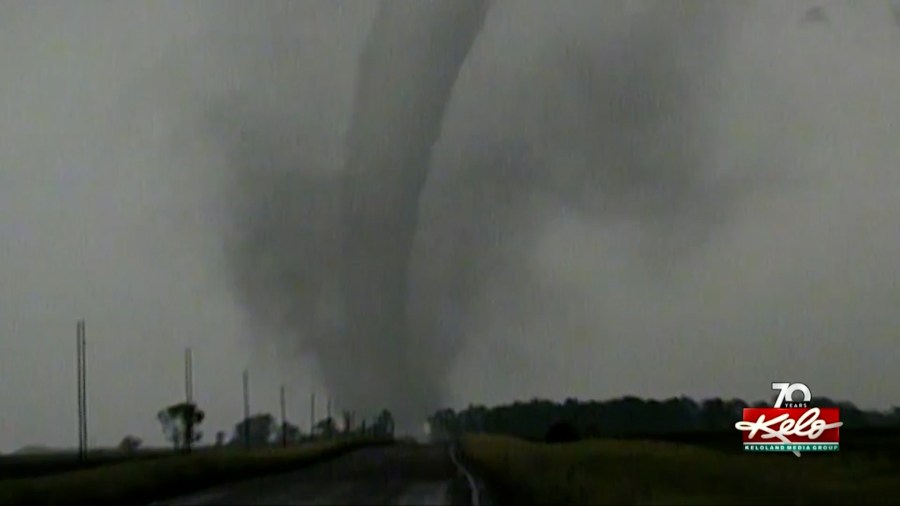SIOUX FALLS, S.D. (KELO) — A movie about teams chasing tornadoes and storms using data and meteorological data has impressed KELOLAND meteorologist Scot Mundt.
“The special effects are fantastic,” Mundt said. Mundt said the impressive special effects are much like the original movie Twister which was released in May of 1996.
Mundt said the science in the movie has some soundness, “but you have to remember too, it’s made for Hollywood.”
He cited an early scene when characters refer to a doppler radar predicting a tornado at certain time. Doppler doesn’t predict a tornado, he said. Meteorologists use doppler radar, they interpret the data and make a forecast, Mundt said.
The movie focuses on storm chaser teams whose members are gathering data about tornadoes. The motivations include helping to improve early warning systems and possibly, breaking apart tornadoes and stopping them.
To Mundt getting a tornado to break apart or dissipate, “that may be a little too far fetched.” However, he said, there seems to always be researching being done on tornadoes.
He recalled testing with project called Vortex. The NOAA National Severe Storms Laboratory said Vortex started in 1994.
In the Twisters movie a team surrounds the tornado with three radar panels to record data. Mundt said that is similar to the testing done with Vortex.
“That kind of mirrored real life,” Mundt said. While some of the research may be exaggerated, Mundt reminds that “Again, it is Hollywood.”
A storm chasers team drives into a tornado and releases fireworks during the movie. In another scene it’s flares. Those scenes were some potential eye roll or eyebrow raising events for Mundt.
Driving into a tornado to shoot fireworks or flares isn’t something he’d recommend.
The movie captures the excitement of storm chasing, Mundt said. But again, it’s exaggerated by the bursting through farm fields and into the path of wind turbines.
“That’s one thing about the movie too, you have to take that into account,” Mundt said. “They were driving through these fields, through the wind turbines. I’m thinking ‘oh my goodnesss if they really do that some people will be really upset that they are driving through their property,'” Mundt said.
Still, while some scenes were exaggerations in his opinion, the movie also showed the power of a tornado, he said. The destruction and loss during and after a tornado were shown in several scenes. A tornado can change lives, Mundt said.
Mundt has been a storm chaser as meteorologist both in the field and in the studio.
“There are things are alike and things that are different when we’re watching storm development from the studio using KELOLAND Live Doppler HD,” Mundt said. Meteorologists watch data and radar and track the storms from the studio, he said. They notice hook echoes and shear in the atmosphere, for example.
“Nowadays you can go ahead and take your laptop storm chasing. We’ve done that before,” Mundt said. The laptop gives the chaser real time data.
Whether it is a storm spotter or storm chaser, there is value in a good set of eyes in the outdoors, Mundt said.
Often, “Nothing beats a good pair ofeyes,” Mundt said.
Storm chasing and meteorology have changed in the 30 years since the Twister movie was released.
The use of the spikes drilled into the ground to hold vehicles steady and keep them from being tossed in a storm is real, Mundt said.
Drones are also used but Mundt questioned how accurate the use was in the movie. Would a drone be durable enough to withstand the wind and power of a tornado and could it be accurately controlled, he wondered.
Twisters showed scenes where multiple teams of storm chasers had gathered at locations, which was noted in the movie. Mundt said 30 years later after the 1996 movie, the increased interest is likely accurate. He borrowed a quote from the movie, “anybody with a $10 app can be storm chaser.”
The new movie could spark interest in meteorology and storm chasing. Storm chasing or storm spotting is about helping meteorology and forecasting including improving the early warning system, Mundt said.


